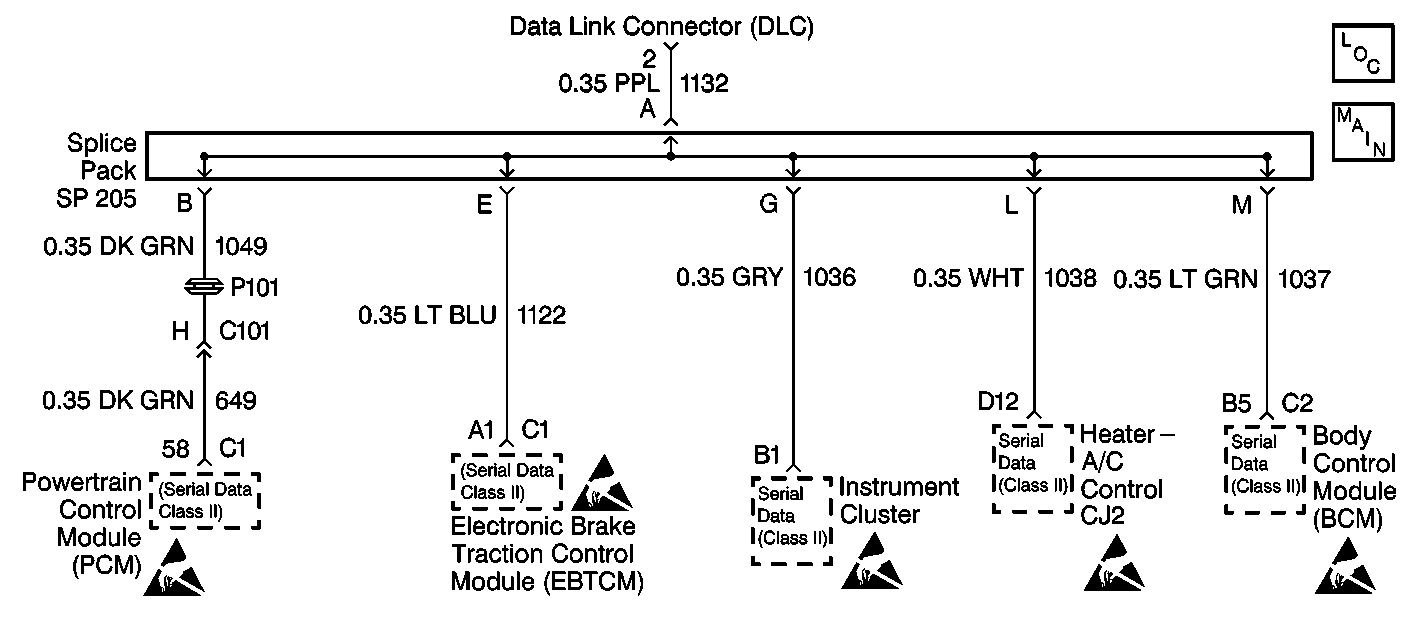For 1990-2009 cars only

Circuit Description
The BCM interfaces with other vehicles systems through the Class II serial data link.
Conditions for Setting the DTC
The BCM detects a short to B+ in the Class II serial data link.
Action Taken When the DTC Sets
| • | The SERVICE VEHICLE SOON indicator lamp turns on. |
| • | The BCM stores DTC U1301 in memory. |
Conditions for Clearing the DTC
| • | The BCM no longer detects a short to B+ in the Class II serial data link. |
| • | The BCM monitors its own transmitted message on the Class II serial data link. |
| • | A history DTC will clear after 100 consecutive ignition cycles if the condition for the fault is no longer present. |
| • | Using a scan tool. |
Diagnostic Aids
| • | DTC U1301 indicates that the Class II serial data link has been shorted to B+. The BCM sends DTC information to a scan tool via the Class II serial data link. If the Class II serial data link is currently shorted to B+ , the scan tool will be unable to communicate with the BCM. Therefore, you will be unable to obtain a DTC U1301 as a current DTC. However, if the scan tool is able to communicate with the BCM and DTC U1301 is read, it will be a history DTC. Wiggle wires and connectors when performing circuit checks on the Class II serial data link. This can often cause the short to B+ to reappear. |
| • | The following conditions may cause an intermittent malfunction to occur: |
| - | An intermittent short to B+ in the Class II serial data link. |
| - | The BCM is shorted to B+ internally. |
| • | DTC P1626 will set in the Powertrain Control Module (PCM) when the ignition switch is on with the Body Control Module (BCM) disconnected. When BCM diagnostics and repairs are completed, refer to Powertrain Control Module Diagnosis in Engine Controls for additional information on PCM related DTCs. |
Test Description
The number below refers to the step number on the diagnostic table.
Step | Action | Value(s) | Yes | No |
|---|---|---|---|---|
1 | Was the Data Link Connector system check performed? | -- | Go to Data Link Communications System Check in Wiring Systems | |
2 | Was the BCM diagnostic system check performed? | -- | ||
Does this BCM DTC reset? | -- | |||
4 |
Is the repair complete? | -- | -- | |
5 | The malfunction is not present at this time. Refer to Diagnostic Aids for additional information regarding this DTC. | -- | -- | -- |
6 |
Are there any BCM current DTCs set? | -- | System OK |
